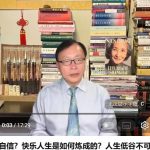October 31, 2015

Feng Jianmei in 2012 after induced labor seven months into pregnancy resulted in a stillbirth. The case ignited national outrage.
Katharina Hesse
BEIJING — Three years after she became a national symbol of the abuses of China’s strict family planning policy, Feng Jianmei finally had a second daughter in August.
Ms. Feng had a stillborn child in 2012 after local officials in Shaanxi Province induced labor seven months into her pregnancy. A supporter of Ms. Feng posted a photograph of her and the bloody fetus online, igniting nationwide outrage and leading to the firing of some officials. Even after that, though, Ms. Feng’s husband was beaten on the orders of local officials, who also led farmers in a march to denounce the family as “traitors.”
On Friday morning, less than a day after the Chinese government announced a shift from its decades-long one-child rule to a two-child policy, Ms. Feng’s husband reflected on their ordeal.
“The tragedy that happened to us was because we didn’t have a permit,” the husband, Deng Jiyuan, said in a telephone interview. “I think it’s a good thing that everyone is allowed to have two children now. That is how the policy should always have been, from the very beginning.”
The decision to end the one-child policy came in dull, bureaucratic language. “Comprehensively implement a policy that couples can have two children, actively taking steps to counter the aging of the population,” the Communist Party said in a communiqué on Thursday.
Those flat words, and their allusion to spurring economic growth, provided the official rationale for transforming a policy that has left cradles empty and hearts hollow across China, scarring generations of families.
The human rights abuses have included forced sterilizations and abortions, the killing of infants and the sale of children. So abhorrent are the practices that the United States government grants refugee status to Chinese citizens who say they face persecution because of coercive family planning, making it easier for those people to get asylum.
Ms. Feng’s case was extraordinary in that it seized the attention of many Chinese and galvanized calls, including from officials and policy makers, to end the one-child system.
But what she suffered was in many ways typical of the practices that spread like a poison throughout the Chinese governance system, from the central government down to the village level, as officials sought to enforce the policy adopted in 1979. From the start, officials across China were told that population control was a priority, and that their jobs and career prospects, as well as those of colleagues, could depend on whether they met the targets.
“The central government, though it didn’t actively advocate for the forceful measures, tacitly approved them because it didn’t say anything,” said Liang Zhongtong, 68, an early adviser to senior officials on family planning who advocated a two-child policy decades ago.
The bitter consequences of the policy go well beyond abuses by officials. Some Chinese parents, with their traditional preference for male heirs, have used abortion and infanticide to ensure they have a son, and the ratio is now about 117 boys born for every 100 girls. By 2020, China will have an estimated 30 million bachelors — a situation so dire that one economist has proposed that a wife should have multiple husbands. “The gender ratio is a result of the policy,” Mr. Liang said.
And with an average rate of 1.6 births per woman, China is not replacing its population, now at 1.4 billion. The elderly will lack caretakers. The slowing economy is already reflecting the effects of the planning.
“This policy has had such a big impact on China’s social development, bigger than the Cultural Revolution,” said Yang Zhizhu, a law scholar at the China Youth University of Political Studies in Beijing, who was fined and removed from teaching in 2010 after he and his wife had a second child. “It’s ruined the demographic structure, both the age and gender structure, and it’s also altered Chinese people’s thinking so that young people are unwilling to bear and raise children.”
Critics say that until the system is abolished entirely, the abuses will continue. Parents who have more than two children are still at risk. Such was the case with Pan Chunyan, a shop owner in Fujian Province who was seized from her store in 2012 when she was almost eight months pregnant with her third child. Local officials took her to a hospital, where a nurse injected her with a drug to induce a stillbirth as scores of thugs prevented family members from entering.
“It was the most painful thing that ever happened to me,” Ms. Pan said in a telephone interview on Friday. “I can’t even think about having another baby. My baby was so grown. He was a life. He used to kick in my belly all the time.”
The one-child policy originated with a family planning policy group under the State Council, China’s cabinet, that was established in 1973, said Mr. Liang, who wrote a book on the policy’s history. The government had for years been encouraging citizens to have fewer children. But in 1979, party leaders, under the group’s advice, took a bold step, embracing the new approach.
Hua Guofeng and Deng Xiaoping, the leaders who succeeded Mao Zedong, and other top party officials “all believed the huge population was the major setback in achieving a better economy,” Mr. Liang said.
After they enacted the policy, he said, “it spread throughout the country quickly.”
“Before 1979,” he said, “there were already family planning groups in the party committees from the provincial level on down, so the system was already there.”
Five years later, Mr. Liang, a population scholar at the Shanxi Academy of Social Sciences, wrote a letter to Hu Yaobang, then the party’s general secretary, arguing that if families were allowed to have two children, the population could still be kept to 1.2 billion by 2000.
Mr. Liang proposed a pilot project in Shanxi, which was approved. That project, in rural Yicheng County, was carried out in secret for decades and ultimately showed that China’s birthrate would have declined naturally. But it never spread because of ignorance and opposition from central family planning officials, Mr. Liang said.











